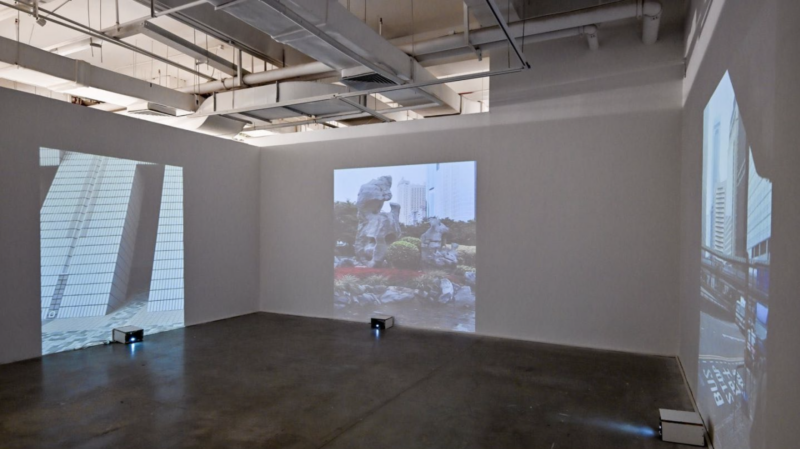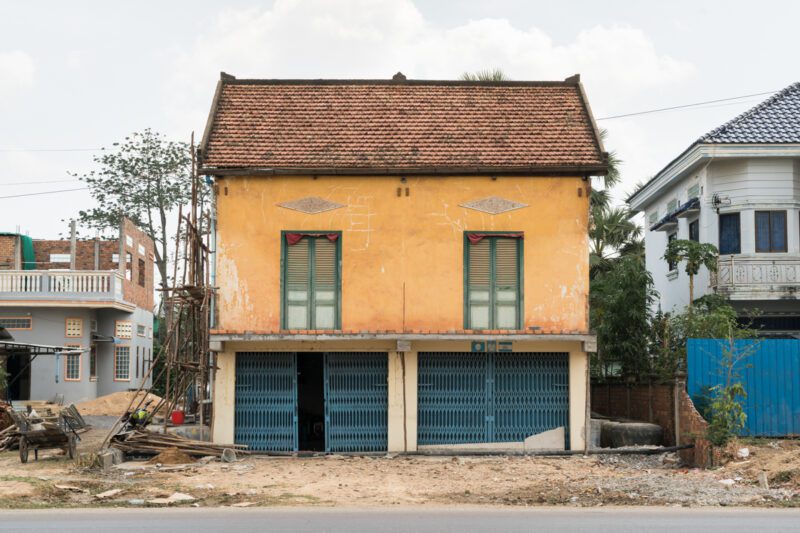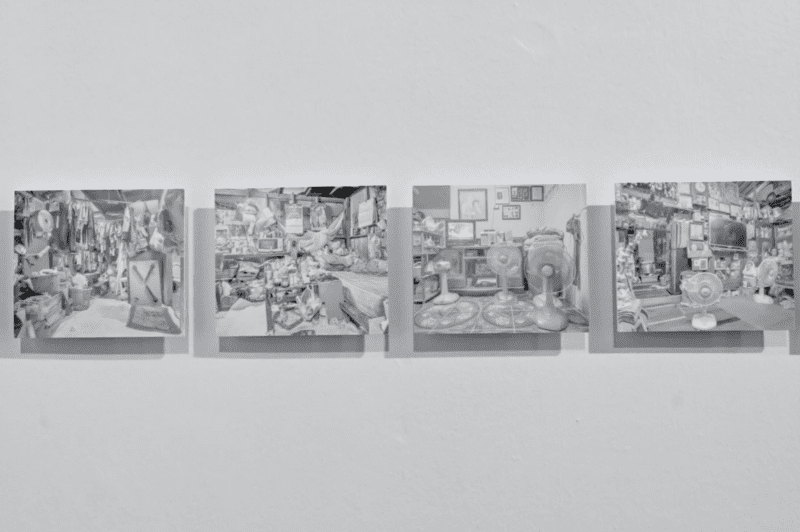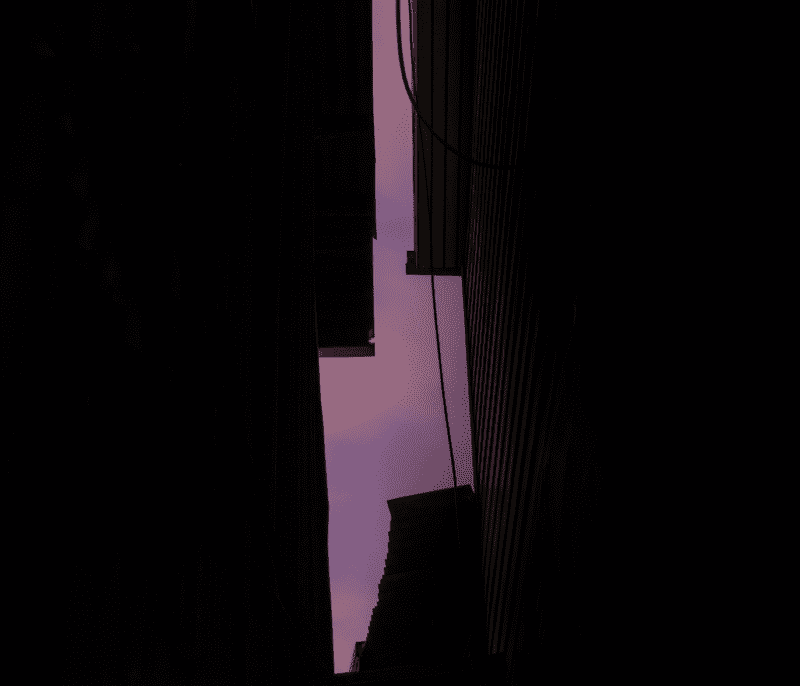

Poklong Anading’s 4-channel video Ocular (2009) reveals the coping of a loved one through a different light within a projection chamber. Retracing his late mother’s steps in Hong Kong when she was working as a domestic helper, he subverts the gaze of grieving whilst looking at it through the lens of a people-watcher, emptied of personal pain and nostalgia. This loss and natural disruptions also reverberated through Yu’s Absent (2014), where the aftermath of Typhoon Haiyan in Tacloban City became a canvas for documenting the impact of forces beyond individual control. The moving images, accompanied by the haunting strains of “Tong Tong Tong Pakitong-Kitong,” immerse viewers in the resilient spirit of school children who, against all odds, continue their lessons in the makeshift tents beside the disaster zone. Yu’s lens captures the paradoxical coexistence of fragility and strength, where the human spirit perseveres despite the disaster.

In the absence of ancient temples and human figures, Lim Sokchanlina’s photographic series offers an arresting portrayal of Cambodia through the lens of National Road No. 5 (2015). Straying from conventional representations, the series delves into the current socio-geographical and political landscape, laying bare the impact of Japan’s funding on the expansion of the highway. Each frame captures houses with frontages sliced open or haphazardly boarded up, serving as a poignant commentary on the intricate socio-political ties between Cambodia and Japan. Beyond this, the series becomes a self-portrait of Cambodia, articulating a generation’s observations on the evolving national landscape, distinct from the prevailing narrative of the Khmer Rouge era. Sokchanlina not only documents the rapid (re)construction of Phnom Penh but also serves as a testament to a profound moment in Cambodian history, reframing the visual narrative beyond the shadows of trauma.


Within the shadows of trauma lie the difficult circumstances that restrict one’s social movability, and this is poignantly portrayed in Miti Ruangkritya’s Room No. 2 (2020) and Sunset on Unnamed Lanes (2020), projects focusing on Khlong Toe, Bangkok. Ruangkritya’s documentation of marginalized inhabitants’ domestic spaces and the glimpses of sunset between tin roofs prompts reflection on urbanization, economic disparity, and the lived experiences of the society’s underbelly.


